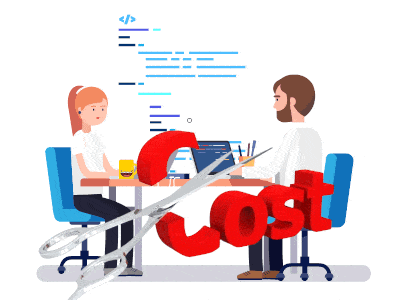
Low-Cost Software Development: Buy Nice or Buy Twice?
Last updated: November 10, 2022 Read in fullscreen view
- 07 Jul 2024
 Top Fintech Companies in Vietnam Driving Innovation Across Digital Banking & Investment 29/54
Top Fintech Companies in Vietnam Driving Innovation Across Digital Banking & Investment 29/54 - 24 Nov 2025
 Top Blockchain Companies in Vietnam 11/29
Top Blockchain Companies in Vietnam 11/29 - 15 Oct 2022
 Project-based team model for one-off and pilot software development projects 11/733
Project-based team model for one-off and pilot software development projects 11/733 - 05 Aug 2025
 Why Doesn’t South Korea Outsource Its IT Projects Like Other Developed Countries? 10/83
Why Doesn’t South Korea Outsource Its IT Projects Like Other Developed Countries? 10/83 - 03 Oct 2020
 Outsourcing Your MVP Development - Streamlined Solutions for future 9/403
Outsourcing Your MVP Development - Streamlined Solutions for future 9/403 - 21 Aug 2025
 Top 30 Oldest IT Outsourcing Companies in Vietnam 8/91
Top 30 Oldest IT Outsourcing Companies in Vietnam 8/91 - 31 Oct 2025
 The True ROI of Software Development Outsourcing for Tech Startups 7/59
The True ROI of Software Development Outsourcing for Tech Startups 7/59 - 25 Sep 2025
 A Practical Guide to Secure Online Work for Outsourced Teams 6/58
A Practical Guide to Secure Online Work for Outsourced Teams 6/58 - 24 Nov 2021
 What is the Actual Cost of Hiring Cheap Developers? 6/348
What is the Actual Cost of Hiring Cheap Developers? 6/348 - 22 Mar 2022
 8 Mistakes Marketing Agencies or Consulting Firms Make When Outsourcing Web Development 6/324
8 Mistakes Marketing Agencies or Consulting Firms Make When Outsourcing Web Development 6/324 - 10 May 2021
 Project Audit and Second Opinion Services 6/237
Project Audit and Second Opinion Services 6/237 - 12 May 2021
 The Real Cost Between Outsourcing IT vs In-House: A Quick Comparison 5/403
The Real Cost Between Outsourcing IT vs In-House: A Quick Comparison 5/403 - 05 Jan 2022
 What Outsourcing Engagement Model is Right For You? 5/290
What Outsourcing Engagement Model is Right For You? 5/290 - 11 Mar 2023
 Common Pain Points in Software Development Outsourcing 5/228
Common Pain Points in Software Development Outsourcing 5/228 - 01 Jan 2024
 12 reasons for software development outsourcing 4/147
12 reasons for software development outsourcing 4/147 - 07 Nov 2024
 Outsourcing Crisis Looming: Will Trump's Policies Transform the Global IT Landscape? 4/160
Outsourcing Crisis Looming: Will Trump's Policies Transform the Global IT Landscape? 4/160 - 09 Jan 2021
 How can outsourcing enable business agility? 4/181
How can outsourcing enable business agility? 4/181 - 14 Dec 2021
 The Top 10 Problems with Outsourcing Implementation and How to Solve Them 4/376
The Top 10 Problems with Outsourcing Implementation and How to Solve Them 4/376 - 02 May 2021
 Outsourcing Software Development: Avoid 8 Mistakes 4/89
Outsourcing Software Development: Avoid 8 Mistakes 4/89 - 16 Dec 2021
 Why outsource Python development of your project? 3/445
Why outsource Python development of your project? 3/445 - 12 Jan 2023
 Top 10 Trustworthy IT Outsourcing Companies in Vietnam 3/262
Top 10 Trustworthy IT Outsourcing Companies in Vietnam 3/262 - 01 Jan 2023
 Why is Vietnam the Top IT Outsourcing Destination of 2023? 3/204
Why is Vietnam the Top IT Outsourcing Destination of 2023? 3/204 - 19 Mar 2021
 Selective Outsourcing of IT Functions - a new trend in business outsourcing 3/496
Selective Outsourcing of IT Functions - a new trend in business outsourcing 3/496 - 21 Oct 2021
 Advantages and Disadvantages of IT Outsourcing 3/321
Advantages and Disadvantages of IT Outsourcing 3/321 - 01 Jan 2024
 Tech Partnerships: Choosing the Right Software Outsourcing Firm in Vietnam 3/166
Tech Partnerships: Choosing the Right Software Outsourcing Firm in Vietnam 3/166 - 08 Oct 2024
 Vietnam: The Rising Star in Global Outsourcing – Trends and Costs for 2025 3/295
Vietnam: The Rising Star in Global Outsourcing – Trends and Costs for 2025 3/295 - 01 Jan 2024
 Software Outsourcing Questions for 2024 3/145
Software Outsourcing Questions for 2024 3/145 - 01 Jan 2023
 4 New IT Outsourcing Pricing Models to consider in 2023 3/323
4 New IT Outsourcing Pricing Models to consider in 2023 3/323 - 01 Oct 2022
 Vietnam is a favorite supply of IT outsourcing services to Japan 2/230
Vietnam is a favorite supply of IT outsourcing services to Japan 2/230 - 06 Oct 2021
 Intellectual property issues with outsourcing software development 2/364
Intellectual property issues with outsourcing software development 2/364 - 03 Nov 2021
 7 phases of Odoo Implementation and Development: Can they be outsourced? 2/357
7 phases of Odoo Implementation and Development: Can they be outsourced? 2/357 - 21 Oct 2022
 Outsourcing Billable Rate 2/244
Outsourcing Billable Rate 2/244 - 01 Jan 2024
 Hiring Tech Talents in Asia: An Overview of Skills, Costs, and Potential 2/149
Hiring Tech Talents in Asia: An Overview of Skills, Costs, and Potential 2/149 - 17 Oct 2020
 How Outsourcing can Improve Time Management for Better Business 2/185
How Outsourcing can Improve Time Management for Better Business 2/185 - 10 May 2021
 What are things you should look for in a good IT outsourcing company? 2/405
What are things you should look for in a good IT outsourcing company? 2/405 - 28 Oct 2022
 Expect the unexpected in 2023 - How Outsourcing Can Help? 2/184
Expect the unexpected in 2023 - How Outsourcing Can Help? 2/184 - 03 Jan 2023
 IT Outsourcing Costs: Is outsourcing really cost-effective? 2/186
IT Outsourcing Costs: Is outsourcing really cost-effective? 2/186 - 01 Jan 2023
 Software Development Outsourcing Trends to Watch Out for in 2023 2/272
Software Development Outsourcing Trends to Watch Out for in 2023 2/272 - 04 Jan 2021
 VIETNAM AS A BIG ATTRACTIVE DESTINATION IN THE FIELD OF OUTSOURCING 2/276
VIETNAM AS A BIG ATTRACTIVE DESTINATION IN THE FIELD OF OUTSOURCING 2/276 - 08 Feb 2022
 Software Development: Fixed Cost or Opportunity Cost? 2/444
Software Development: Fixed Cost or Opportunity Cost? 2/444 - 01 Sep 2019
 Outsourcing Software To Vietnam: Facts, benefits and limitations 2/396
Outsourcing Software To Vietnam: Facts, benefits and limitations 2/396 - 09 Sep 2022
 Close Collaboration and Communication Can Overcome the Challenges of Distributed Teams 1/134
Close Collaboration and Communication Can Overcome the Challenges of Distributed Teams 1/134 - 13 Jan 2023
 What are the Hourly Rates in Offshore Software Development? 1/224
What are the Hourly Rates in Offshore Software Development? 1/224 - 31 Dec 2021
 Outsourcing Software Development to mitigate the impact of COVID-19 1/290
Outsourcing Software Development to mitigate the impact of COVID-19 1/290 - 21 Aug 2022
 Forbes: IT Outsourcing Hotspot: Vietnam, A Small But Mighty Powerhouse 1/243
Forbes: IT Outsourcing Hotspot: Vietnam, A Small But Mighty Powerhouse 1/243 - 15 Aug 2021
 TIGO Rate Formula - Things the partners should know 1/422
TIGO Rate Formula - Things the partners should know 1/422 - 08 Aug 2021
 Why Nearshore Software Development is better than In-House Development? 1/176
Why Nearshore Software Development is better than In-House Development? 1/176 - 13 Oct 2021
 Why Outsourcing Software Development Services Is Gaining Traction With Non-Technical Leaders? 1/299
Why Outsourcing Software Development Services Is Gaining Traction With Non-Technical Leaders? 1/299 - 01 Jun 2025
 10 Sustainable & Unique IT Outsourcing Companies in Vietnam 1/62
10 Sustainable & Unique IT Outsourcing Companies in Vietnam 1/62 - 01 May 2023
 Streamline Your Business with Outsourcing 1/170
Streamline Your Business with Outsourcing 1/170 - 04 Apr 2024
 Unlock Vietnamese-Japanese outsourcing potential 1/215
Unlock Vietnamese-Japanese outsourcing potential 1/215 - 11 Mar 2024
 Why You Should Hire Odoo Developers from Vietnam to Customize Your ERP System 1/90
Why You Should Hire Odoo Developers from Vietnam to Customize Your ERP System 1/90 - 01 Jan 2024
 What The World Is Flat Means to IT Outsourcing 1/159
What The World Is Flat Means to IT Outsourcing 1/159 - 02 Nov 2023
 What are the pros and cons of iIT outsourcing? 1/185
What are the pros and cons of iIT outsourcing? 1/185 - 17 Jan 2024
 What are the benefits and challenges of using multi-sourcing or single-sourcing strategies? 1/157
What are the benefits and challenges of using multi-sourcing or single-sourcing strategies? 1/157 - 10 Jan 2024
 Facts Chart: Reasons for outsourcing 1/133
Facts Chart: Reasons for outsourcing 1/133 - 02 Mar 2021
 Estimate the Cost of Software Development 1/313
Estimate the Cost of Software Development 1/313 - 01 Mar 2022
 Top 5 reasons why outsourcing to Vietnam is a smart move 1/262
Top 5 reasons why outsourcing to Vietnam is a smart move 1/262 - 01 Apr 2021
 IT Outsourcing to vietnam: Why It Is A Good Choice? 1/260
IT Outsourcing to vietnam: Why It Is A Good Choice? 1/260 - 15 Nov 2023
 IT Staff Augmentation Types and the Best Choice for Your Business /156
IT Staff Augmentation Types and the Best Choice for Your Business /156 - 01 Jan 2023
 Top Software Development Challenges in 2023 /279
Top Software Development Challenges in 2023 /279 - 08 Jan 2024
 Outsourcing on an As-Needed Basis /144
Outsourcing on an As-Needed Basis /144 - 01 Feb 2023
 [InfoWorld] Is your outsourcer agile enough? /183
[InfoWorld] Is your outsourcer agile enough? /183 - 12 Oct 2021
 Vietnam outsourcing path - the silk road connecting ASEAN with the developed countries (EU, US, Japan...) /283
Vietnam outsourcing path - the silk road connecting ASEAN with the developed countries (EU, US, Japan...) /283 - 19 Oct 2020
 The hidden costs of outsourcing software development /434
The hidden costs of outsourcing software development /434 - 03 Nov 2022
 Top questions and answers you must know before ask for software outsourcing /265
Top questions and answers you must know before ask for software outsourcing /265 - 16 Mar 2021
 Outsource Data Engineering Services - TIGO Streamlined Solutions /236
Outsource Data Engineering Services - TIGO Streamlined Solutions /236 - 10 Mar 2021
 The 7 Biggest Mistakes to Avoid Before Outsourcing a Web Development Project /224
The 7 Biggest Mistakes to Avoid Before Outsourcing a Web Development Project /224 - 01 Jan 2023
 Top 5 IT outsourcing countries in 2023 /254
Top 5 IT outsourcing countries in 2023 /254
How much does it cost to outsource software development? The major concern of many startup entrepreneurs looking to save money on software development projects is whether outsourcing really helps fhem to achieve their goals towards cost-effectiveness.
Is low-cost software development a good choice?
Same project. Same requirements. Different price. What’s wrong with that?
It’s an open secret that you can receive quotes for the same RFP (Request for Proposal) ranging from $5,000 to $150,000. How do they differ? How to select the vendor? Finally, what to expect from a selected provider?
No worries. We’ll help you fill the gap by sharing some basic thoughts on the reasons for such a huge price range and what you can expect from each type of company.
At the basic level, these providers can be divided in the way described below.
Mass Market
Companies that tend to offer template-based development. They are the lowest cost and often deliver software products of the worst quality. Often, customers have to take their failed projects to more experienced vendors and lose both time and money.
They never say “No” to a project and are not concentrated on their customer’s success. They tend to employ the cheapest developers or even outsource your project to a very low-cost freelancer. Their absolute goal is to spend as little time on your project as possible.
You shouldn’t expect high-quality maintenance and support services. In most cases, these companies don’t even provide this type of service, since the code quality is low and their customers face the need to hire another agency to finish their project.
Their customers are usually jobbers, who don’t have any business and marketing homework behind the specification. Oh, well, they don’t even have the specification. As a rule, projects by mass market providers end up as “failed”.
Freelancers
The result varies greatly on the level of experience and self-management. Hiring a freelance contractor can often turn into a risk.
It’s hard to tell the basic cost you are expected to pay because their rates depend deeply on individual factors like experience, portfolio, location, and even their self-esteem. So the price range is huge.
You can hire a brilliant guru developer at $35 per hour and be over the moon. As well as you can throw $150 per hour away and find yourself alone with your unfinished/failed project in the middle of nowhere.
Another way freelancers make money is that your project will be their part-time activity. Well, it’s good when you can turn your hobby into a monetized source of income, but chances are high that your freelancer will quickly get burned out and quit the job before it’s done.
Are you considering to hire a freelance developer or designer? Well, shortlist only those guys who’ve been doing freelancing for at least one year. It often happens that freelancers go back to a full-time job, once they realize they can’t make it. And there’s no surprise because it’s impossible to handle several complex projects at a time alone.
Small Company
This type of companies is usually established by developers who code on their own. The company size is usually 1–10 employees, including management. Due to lack of resources, they can’t take large complex projects and mitigate risks associated with the development process.
The result depends greatly on the ethical level of management as they don’t have any established processes.
Mid-sized Company
These companies usually have up to 200–300 people on board. Their proposals are normally based on a per hour estimate. Mid-sized companies usually have established, efficient, and transparent management processes.
This type of companies usually makes perfect sense to be hired as a long-term partner, because they already have:
- Experience with custom software development;
- Experience with related technologies and can quickly find additional resources for your project;
- Experience with additional services like design, SEO and business analysis.
With higher rates, these companies are more efficient and deliver faster and of higher quality than their more affordable mass market competitors.
Large companies
These companies are normally defined by the number of employees and offices. They are often located in as many countries as possible (Ukraine, Belarus, Bulgaria, Poland, for example), since they have high turnover and growing need for new talents.
Very often companies of 500+ people establish their own educational centers and internship programs to have a pool of specialists upon your request. But it also happens, that your project will be trusted to a growing talent curated by a more senior colleague.
A single drawback of working with large companies is that their processes are too tight. Well, in most cases this fact only benefits the customer, but large enterprise will be less flexible compared to their smaller competitors.
Once you need to change several lines in the contract, you’re likely to face a rush of bureaucracy and will spend more time, instead of having a direct call with the decision makers of smaller companies.
Premium Development
Usually, these companies serve the needs of enterprise-level customers. Their projects usually start at $200k and are normally long term.
It’s hard to label these companies by the number of employees or any other common metric. Instead, these companies are usually located in the most luxurious business centers, pay salaries above average, and arrange loud parties.
All that results in a $100-$250 hourly rate and a $500,000 price for an average app.
Hiring a boutique software development company is a safe way in most cases, as you can be sure your project will be completed and of expected quality. This option is also suitable for companies that can’t choose the best way to waste their money. It’s just a perfect fit.
The table below describes briefly the key criteria customers use for selecting candidates.
Rules of Thumb When Choosing a Vendor
- If your project is long term, steer clear of mass market and freelancers. Small companies are at risk zone as well, because they tend to be unstable and may cease to exist before your project is completed.
- If your project is very simple, very short term, and classic (meaning that there are plenty of similar websites or apps on the market), it is OK to try your luck with freelancers. As long as they have very relevant experience.
- If you are very well funded and your project is not in a rush, it is OK to look for boutique development companies or large development companies. You will end up paying a lot, but the risks would be pretty low.
- If you need the best value for money, and long term relationship, look for mid-sized companies that provide a mix of flexibility and reliability at the same time
Last but not least, the following rule is actual is you want to hire a true expert:
The key tip on your way to hiring a remote partner is never to pick the cheapest option. Really, regardless of location, portfolio, company size, technology stack, the average rate should not go under $25 per hour. Everything that is below $25 hourly rate should be a red flag for the decision maker.
To be on a safe side, select your perfect candidate based on their relevant and competitive portfolio, reasonable rates, and communication.






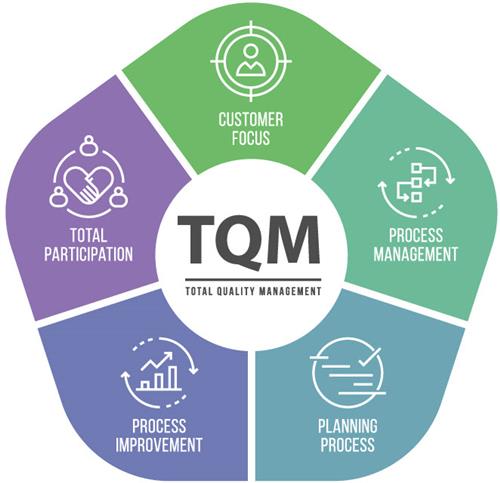
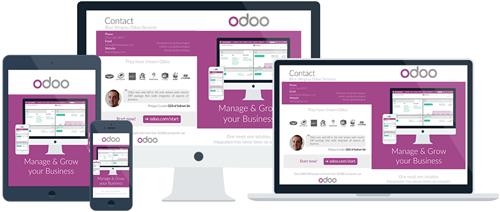





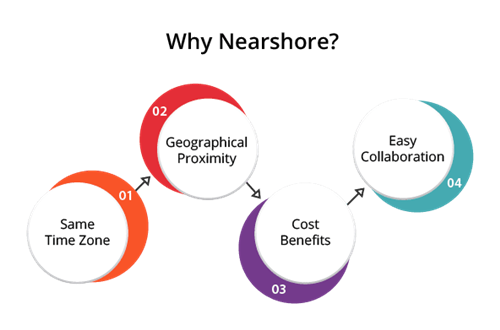






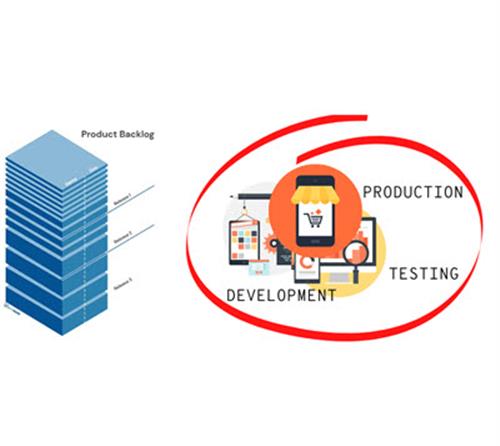














 Link copied!
Link copied!
 Recently Updated News
Recently Updated News